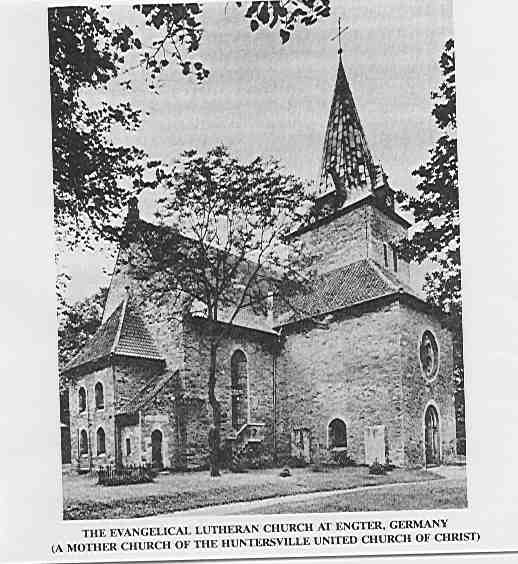
Much of the immigration to Laughery, Ray and Adams townships came from the area along the irregular border between the Grand Duchy of Oldenburg and the Kingdom of Hannover, on a line between the cities of Bremen and Osnabrueck. Three groups came in large numbers.
North German Catholics, particularly from the area around Damme in the Grand Duchy of Oldenburg, settled around Oldenburg,Indiana beginning in 1835. Between 1830 and 1849 some 3,440 emigrants left Damme. A copy of a list of their names is available at the Batesville Public Library.
The second group of immigrants to these three townships came from the Protestant communities surrounding Damme. They established Huntersville Church just a few miles south of Oldenburg, Indiana, in 1837. These Protestant settlers at Huntersville came from towns which form a horseshoe around the western, sothern, and eastern sides of Damme Parish. Many of them came from the towns of Bramsche, Engter, and Venne on the southern side of the horseshoe.
Thus Huntersville and Oldenburg families were neighbors back in Germany. The ties between these two comunities are much deeper than commonly realized.
In the 1840's a third group of immigrants from the Syke-Heiligenfield-Wachendorf vicinity south of Bremen settled west of Hubble's Lutheran Church near present day Sunman. They also established St. Stephen's Lutheran Church near what is now Spades in 1843 and Adams Lutheran Church in the southwestern corner of Adams Township in 1852.
Some of this immigration from the Syke-Heiligenfelde region was caused by potato blight, particularly around 1845 and 46. This blight affected much of northern Europe. Immigrants from the Syke vicinity also settled around Fink's Evangelical Protesant Church north of Osgood and around the Lutheran Church at Napoleon.
Because these three groups were particularly significant around Batesville, the third and fourth chapters in ths history will focus on their north German heritage. The next chapter will continue the story of immigration to the Batesville area until the present day.
